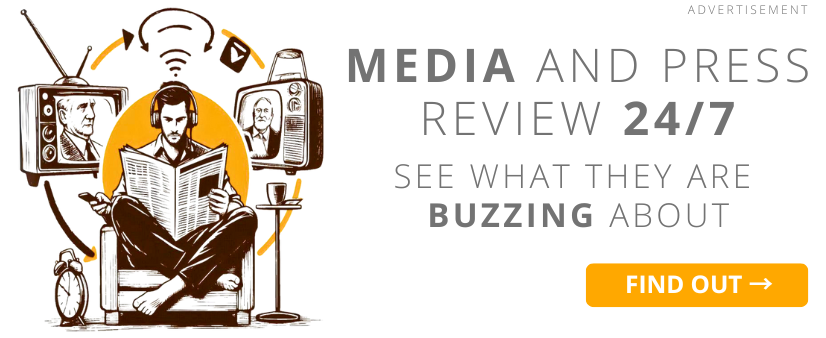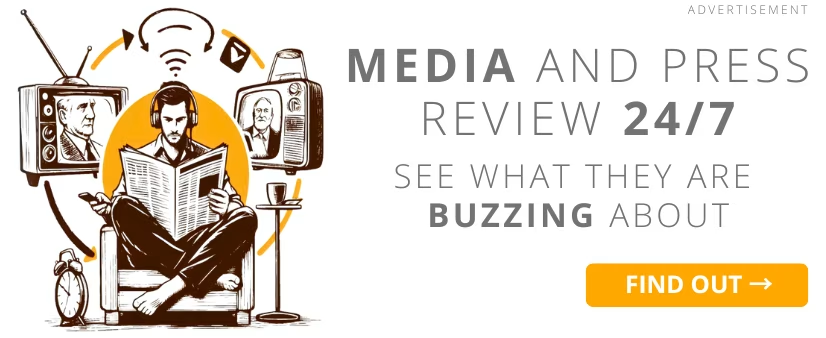 illustration: DALL-E
illustration: DALL-EExperiments by Daniel Kahneman and Amos Tversky in the 1970s showed that people overrate events they recall with ease. Since then media watchers have noted that the same mental shortcut bites still harder today amid vast information noise. This effect is called availability heuristic. It leads to many risky cognitive slips.
Rui Feng from Tianjin University analysed 1600 disaster news stories and proved that the rate of media mentions lifts risk ratings more than official death counts. The more coverage, the faster the belief that danger lurks round the corner.
Digital media act like a megaphone. One click starts a share cascade and the headline sticks like a splinter. As a result our sense of safety shifts faster than real conditions. A simple chain shows how the availability heuristic grows:
- intense message means more exposure to information
- more exposure means higher credibility in the eyes of readers
- higher credibility means an inflated risk estimate
So a short circuit links memory with prediction and steers later choices.
Fear works harder. Almost double
Joel W. Roberts and team at the University of Texas at Arlington tested in 2024 how emotion changes the power of the heuristic. Volunteers saw extreme negative and extreme positive event scripts. The first set raised the judged chance of an accident or illness.
A shock message acts like a memory booster. When the item shocks, the brain writes it in bold and risk climbs in the mind. A bright extreme gave no such push. Joy seems to fade sooner than fear. The impact appears in numbers:
| Stimulus | Mean shift in perceived probability |
|---|---|
| Extreme negative | +57% |
| Extreme positive | +34% |
| Neutral | +31% |
The negative cue nearly doubled expected risk versus the neutral sample. In practice tabloids and dramatic reports not only stir emotion but also rescale the audience’s maths.
Weakening factors. The authors list three. Topic saturation. Cool expert commentary. Breaks in exposure. Short pauses cut the effect by one third.
Fresh empirical evidence
Northern and Southern Europe differ in climate yet share the same shortcut. Giacomo Di Baldassarre and co-workers surveyed more than 8000 Italians and Swedes during 2019-2021. People who had just faced a flood, avalanche or health crisis showed the highest fear level for the same hazard ahead.
The pandemic added another layer. At the peak of the second COVID-19 wave respondents ranked the virus as fiercer than quakes or fires, though geology sometimes killed more. Fresh experience beat dry data.
The study revealed three tiers of availability:
- personal experience raises subjective risk the most
- media coverage works likewise but fades after a week
- exact victim count has a mild effect unless it sets a record
A note for reporters. Each post-disaster story heightens public readiness for the next blow even when odds fall year by year.
Risk costs. Real money
Financiers also bow to the heuristic. A 2025 study by Xike Lei of Chongqing College of Economics tracked private investors on five emerging markets in 2023-2024. The author showed that a mention of a plane crash cut airline shares in portfolios by 18% within 24 hours despite no firm news on the carriers.
Investors moved faster when the news arrived by video than by text. Women shifted cash to deposits while men raised commodity stakes. The gender gap reached 11 percentage points against high-risk stocks.
| Media event | Change in high-risk share holding | Women’s move | Men’s move |
|---|---|---|---|
| Plane crash (video) | −18% | −22% | −14% |
| Stock crash (text) | −9% | −11% | −7% |
The table shows how the idea of a rare drama flows straight into money moves. When availability rises, data-based maths yields to emotion.
The study offers two counterpaths. Lift economic and market education. Set rules for alarmist messages on finance sites. Both aim to trim the gap between real and felt risk.
Distortions and cognitive errors can be minimised
How can we blunt mental shortcuts and slips. Jairigis Hodson’s team at Canada’s Royal Roads University reviewed outreach campaigns from the first two pandemic years and coined ‘reasoned transparency’, meaning thoughtful openness. Experts urge us to explain uncertainty rather than hide it under false certainty.
The model has three steps. First, the author states what is known. Next, they clarify what is unknown and why the gap exists. Last, they say when new data may arrive. The reader then treats news as a process, not a verdict.

The strongest tools named by the scholars:
- comparison of case counts to population not to a headline
- display of a trend chart not a single anecdote
- prompt for self-calculation via interactive tools
Each tool cut false belief rates by 15-20% within a week. The aim is not to quench emotion but to shift it from fear to curiosity. Reasoned transparency seeks not to fight the heuristic but to guide a healthier use of memory.
The availability heuristic is quick fuel for our imagination, yet it need not rule every decision. It is not a brain flaw but its fast mode. The media know how to spark it because a sharp rise in attention turns into ad gold. When you see another "breaking news" banner, do a simple test. Am I judging risk by the picture or by the data? If the picture wins, pause, check the numbers, and then choose.
COMMERCIAL BREAK
New articles in section Skills and knowledge
War reporter in the new reality. Evolving techniques, same purpose
KFi
What happens when war breaks out just across the border and journalists aren't ready? Polish reporters faced that question after Russia invaded Ukraine in 2022. Lacking training, they improvised: blurred details, hid names, and balanced trauma with truth.
How LLMs are reshaping SEO. Smart content strategies for the age of AI
BDw
For years, SEO was a fairly predictable game. Pick the right keywords, optimize your content, and watch your website climb the rankings. But today, a silent revolution is underway - and it`s being led by large language models (LLMs) like ChatGPT, Claude, Gemini, and DeepSeek.
Chronemics, or The Language of Time. What Your Watch Says About You
Bartłomiej Dwornik
You walk in on time, glance at your watch, wait five minutes, then leave. Someone else is thirty minutes late and acts like they had to wait for you. Time in communication is a tool, a weapon, and a status marker. Welcome to the world of chronemics. The study of how time affects human relationships.
See articles on a similar topic:
Sarcasm in Communication. A Study by INSEAD Researchers
Krzysztof Fiedorek
Sarcasm can be a valuable tool in interpersonal communication, but its effectiveness depends on the context and the relationship between the sender and the receiver. Researchers at INSEAD have shown that well-utilized sarcasm can be a powerful asset in business language and advertising.
Computer-Assisted Reporting. Can algorithms replace journalists?
Bartłomiej Dwornik
Can algorithms replace journalists? This question keeps coming back, especially in an era of the growing role of artificial intelligence and automation. However, instead of painting apocalyptic visions of newsrooms filled with robots, it is worth looking at the tools that are already changing how information is created and analyzed.
Betteridge's Law. Is every headline with a question mark a gimmick?
Krzysztof Fiedorek
Betteridge's Law is a journalism hypothesis suggesting that any headline ending with a question mark can be answered with “no.” This rule applies to yes-or-no questions. It wasn’t actually created by Ian Betteridge and… it’s mostly untrue.
AI slops and microtargeting. Why wou should NOT LIKE the bread horse
Bartłomiej Dwornik
"I grew this garlic chive all by myself on the windowsill. But I bet you won't congratulate me." Do you also see an influx of such posts in online communities? Be careful. This is called AI slop (or Boomer Trap), and it is NOT just a harmless game or entertainment. It is a well-thought-out mechanism in which the currency is you. First, your time and engagement. And soon, your money.





























